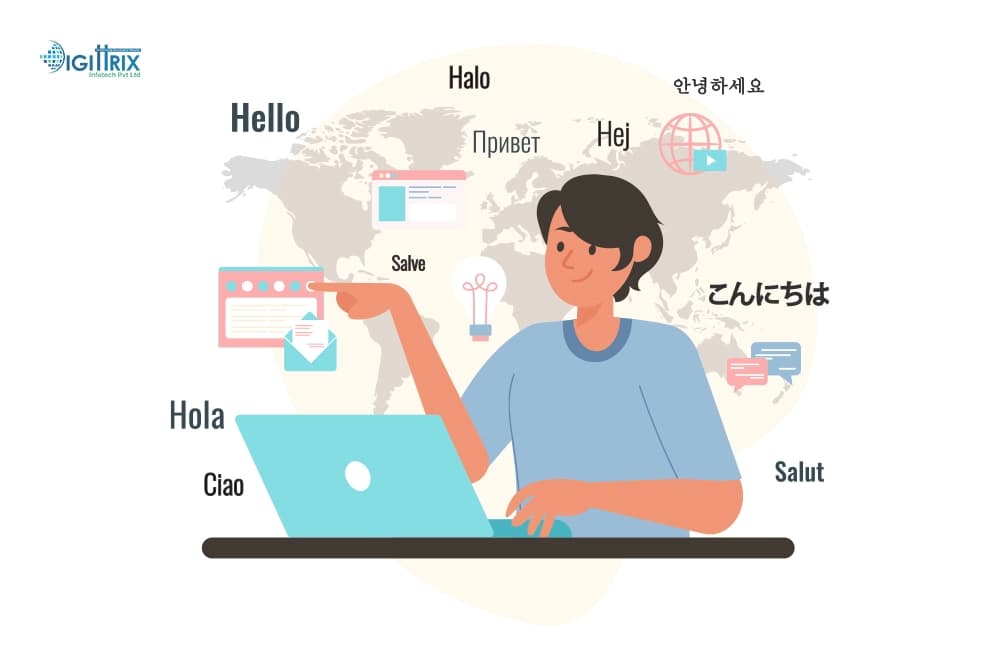The design of multi-language software requires a number of important considerations that will ensure an efficient and seamless user experience for users across various languages. Cyberkannadig is the latest multi language software with help to increase your productivity. Below is a step-bystep guide to assist you in:
-
Internationalization (i18n):
- Create your software that is designed with an international perspective with internationalization in consideration. This is a way of separating your software from images, text strings and any other local-specific components.
- Make use of Unicode UTF-8 encoder to allow the wide variety of characters of diverse languages.
-
Language Selection:
- Make it easy for users to choose the language they prefer. This can be accomplished by the dropdown menu for languages within the settings, or even during the initial configuration process.
-
Localization (L10n):
- Find the string of text and images as well as other components which require localization.
- Make separate language files or resource bundles to each languages that are supported. The files must contain translation versions of the entire string of text and other locale-specific components.
-
Translation:
- Translate the entire text string and any other text into available languages. Professional translators are available or make use of online translation services.
- Verify that the translations used have been made in a way that is accurate and suitable to the intended audience.
-
Dynamic Content:
- Check if your application is able to display interactive content that must be localized, like the content created by users or information pulled from outside sources. Be sure the content you are displaying is correctly translated and localed.
-
UI Design:
- Create the user interface (UI) to allow for texts that expand and contract. This occurs during the translation process. Consider layout adjustments that are required to allow for longer strings of text in various languages.
- Do not embed text into images as it makes translation harder.
-
Testing:
- Make sure you test your program thoroughly for each language supported to make sure that all text strings as well as specific elements for the locale are properly displayed.
- Be aware of the layout of your text, any issues with text as well as any cultural sensitivities which may be present during the tests.
-
Support for RTL Languages:
- If the software you are using is compatible with languages that write from left to right (RTL) like Arabic or Hebrew ensure that you have the UI layout and alignment of text can be adjusted in a way that accommodates RTL text.
-
Documentation and Support:
- Offer documentation and other support materials that are available in all supported languages, for users to make use of your program efficiently.
-
Feedback Mechanism:
- Create a system that allows users to give feedback about translations and to report any localization problems they may encounter. This will help you continually enhance accuracy of translations as well as the localization effort.
Advantage of Multi-language Software
1. Broader Market Reach
Multi-language software allows businesses to connect with a worldwide market by offering localized versions of their software. This could lead to an increase in revenue and market share when the application becomes more accessible to users who are not English-speaking.
2. Improved User Experience
The users are more at ease and productive when working with software that is in their spoken language. Multi-language support improves the user experience decreases learning curve and reduces the chance of making mistakes.
3. Competitive Advantage
Multi-language support is a way to differentiate the company from its competitors that offer their products in a single languages. It shows determination to be inclusive and provide worldwide customer service.
4. Increased Customer Loyalty
Users who are able to use the software that they prefer in their language tend to be loyal to the software as well as the company. This can lead to greater retention rates for customers.
5. Conformity to Local Regulations
In certain regions, the provision of software that is localized is an obligation of law. Multi-language software support allows for that these requirements are met to avoid potential legal issues as well as fines.
6. Enhanced Collaboration
In the case of businesses that have international teams multi-language software may help improve communication and collaboration because team members can make use of the software using their preferred language.
If you follow these guidelines by following these steps, you can create multi-language applications that provide an easy and seamless experience to users from all over all over the world.
